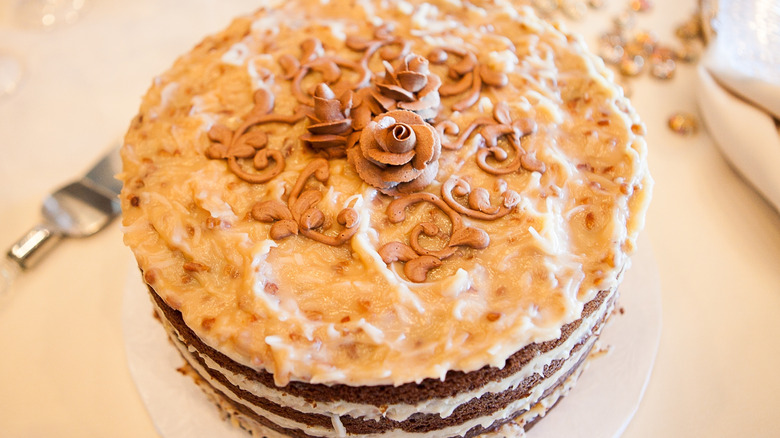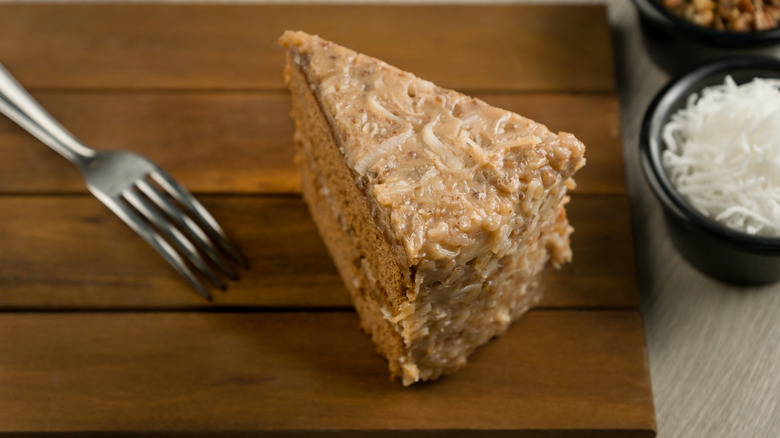German Chocolate Cake Was Not Created Where You Think
German chocolate cake is a near-perfect dessert. Beloved by dads, moms, and youths alike, the rich chocolate is beautifully contrasted by the layers of coconut, which is a perfect upgrade to canned or homemade frosting. The most interesting thing about the dish, though, isn't its rich, nuanced mouthfeel, but rather the fact that its origins lie far from the European country that would seem to lend the cake its name.
In fact, the dirty little secret is that the name German chocolate cake doesn't refer to geography at all. Instead, the name comes from a man called Samuel German, who is credited with inventing a variety of sweet chocolate intended for baking purposes. To make matters more confusing, the name of the company he developed it for, Baker's Chocolate, wasn't specifically for bakers, but rather was named after the owner, James Baker. Still with us?
The story tends to go that the first recipe hit the Dallas Morning News in June 1957, under the name "German's Chocolate Cake," named for the sweetened chocolate the recipe developer, Mrs. George Clay, used as a base ingredient. However, The Irving News Record, a local Texas paper, published a recipe called "Summer German Chocolate Cake" a year earlier, in May of 1956, which called for "four layers of delicious German chocolate, put together with pecans and coconut in a cream filling..." (via Newspapers by Ancestry).
How a grammatical error changed a dish's legacy
Mrs. George Clay's recipe was picked up by national newspapers and replicated around the country, leading to a whopping 73% single-year increase in German's Chocolate sales. Somewhere along the way, recipe printers dropped the apostrophe. This led to a misconception so widespread that President Lyndon B. Johnson served the cake to a German chancellor in 1963 — though whether Chancellor Erhard recognized the mistake is anyone's guess.
When you think about it, German chocolate cake being unrelated to Germany makes sense. Pecans, one of the main ingredients, come from the Americas and are far more prevalent in Southern cooking than they are in German cuisine. While Germans are known to drink buttermilk straight, the combination of pecans and buttermilk is about as Southern American as it gets.
It's likely that the exotic name actually worked in the cake's favor, similar to how Häagen-Dazs' name means nothing other than a connotation of European elegance. Thus, with a simple overlooked punctuation, German chocolate cake joined Russian dressing and French dip sandwiches in the ranks of American-made foods unrelated to the international names they carry.


